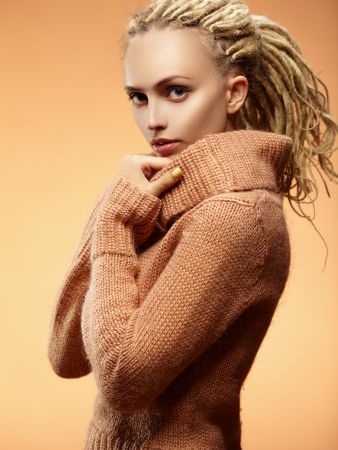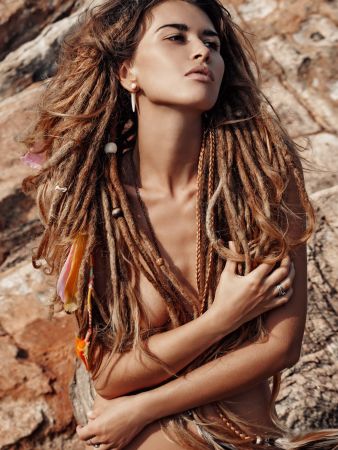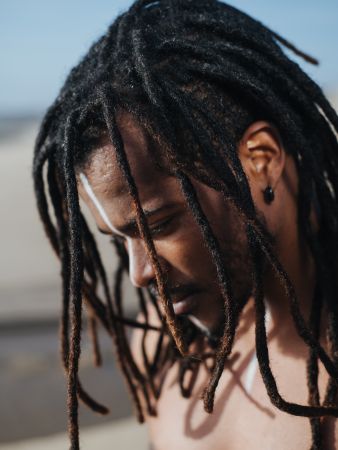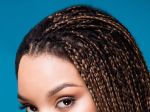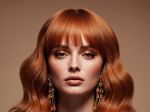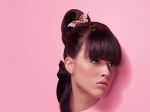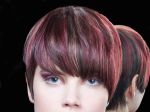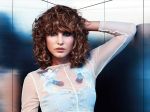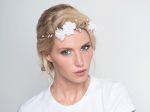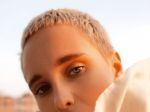Dreadlocks & Dreads: DIY & Styling Tips
Dreadlocks & dreads: do it yourself & styling tips
What exactly are dreadlocks?
Dreadlocks are also called rasta braids or rasta hair. Other terms are dreads, dreadz, dread locks, natty or nappy locks. Dreadlocks are actually matted hair - the hair is intentionally matted strand by strand. Rasta braids, also known as braids, on the other hand, are plaited. So there is a big difference.
The term dreadlocks is a combination of two English terms:
- "dread", which means scary
- and "lock" for curls
Dreadlocks are a statement - a fashion statement.
What types of dreadlocks are there?
A distinction is made between natural and cultivated dreadlocks. Cultivated dreadlocks can be created. This requires a professional who needs a whole day to create this dread hairstyle.
Natural dreadlocks, on the other hand, can be created by yourself. They are created by simply not combing your hair. You can also twist them. At some point, they will tangle naturally. This style is also called the neglect look. Natural dreadlocks only work with frizzy hair and months of patience.
Where do dreadlocks come from?
Dreadlocks have been around for hundreds of years. Even the ancient Egyptians wore dreadlocks, which are actually tufts of matted hair. This splendour of hair is often associated with Rastafari in Jamaica, Bob Marley and reggae music. The Rastafarian movement has its origins in the 1930s. Rastafarians wear dreadlocks mainly for religious reasons. Back then, they rebelled against European dominance in Africa. They apparently believed in the power and strength of uncut, untreated hair.
Why do people get dreadlocks?
People who opt for dreadlocks today wear this hairstyle as a symbol of rebellion. They rebel against accepted norms such as appearance or lifestyle. The hair trend is enjoying a growing fan base. But dreadlocks are not always the way to rebel. Time and again, there are discussions around the viewpoint that dreadlocks are part of 'black culture'. In the spirit of the universally praised diversity and individuality, everyone should wear dreadlocks if they feel like it. Incidentally, both men and women can have dreadlocks. Dreadlocks look just as cool on women as they do on men. Dreadlock hairstyles are unisex, so to speak.
What is the difference between dreadlocks and dreadlocks?
First of all: dreadlocks are easier to care for than dreadlocks. And they are easier to remove. Even if both look similar at first glance, there are serious differences between dreadlocks and dreadlocks.
- With cultivated dreadlocks , the hair is matted strand by strand. A crochet hook is used to create an even, fringeless dreadlock result. Thick, frizzy hair is ideal for this. If you have thinner, finer hair, you can have your hair thickened with real hair. If you want to get rid of your dreadlocks at some point, you will have to cut off your own hair in most cases.
- Dreadlocks are not actually curls. Rastas, also known as braids, consist of many small plaits. They are made of synthetic hair and are super fine. Their diameter is between 0.5 cm and 2 cm. These delicate braids of synthetic hair are braided into your own hair and the ends are sealed with hot water or a lighter. The braids can be easily removed from your own hair.
What length can you wear dreadlocks with?
The hair should be a certain length - at least 10 cm. Hair longer than 30 centimetres can quickly break off in the form of dreadlocks. And: the shorter the hair, the more it sticks out from the head. So for short dreadlocks you need about 10 cm of hair.
Thin dreads
The longer the hair, the thinner it is towards the ends. Based on this knowledge, thin dreads will not look good with long hair. This is because long hair with dreads that are 3-4 mm thick can often only be half dreaded. The open part is then usually very long. In order for dreadlock hairstyles to look good, the hair should not be too long. Short, thin dreads, so-called baby dreads, often look funny but not casual. Therefore, the thinner the dreads you want, the more you need to consider.
Can you undo dreadlocks?
Fresh dreads can be combed out again, albeit with some effort. This requires patience and about as much time as it took to create the dreadlocks. To remove the dreads without cutting them off, you need a lot of time, a large supply of hair conditioner and a crochet hook. The needle is then used to pluck the dreads from the end to the base.
How much does it cost to have dreadlocks made?
According to the internet, dreadlocks with your own hair cost around 300 euros. You should allow around 8-10 hours. It is best to discuss the time required directly.
Can anyone have dreadlocks?
Anyone can have dreadlocks, but hardly any traditional hairdressers can do dreads. In this respect, the question should rather be who can create this cool look professionally. The best place to ask is an afro shop or google the term dreadart in your area.
How are dreadlocks washed?
Dreadlocks need to be regularly re-dreaded at the roots - otherwise they will fray. Washing the hair itself is more time-consuming than normal. Dread fans like to use olive soap or curd soap. Shampoos containing silicone are not suitable for washing dreadlocks as the hair then becomes too slippery and cannot be matted or tangled. Mild shampoos are therefore better. Use this to lather the dreads and wash the shampoo out thoroughly.
Can dreads go mouldy?
Rastas don't tend to go mouldy as they are artificial hair that can be removed at any time. It's a different story with dreadlocks. Apart from the fact that they should not only be washed and deep-cleaned every few months, the dreads need to be dried as quickly as possible. Otherwise, they tend to develop an unpleasant odour and can become mouldy. They should therefore not be left in a damp state for too long.
Are dreadlocks easy to care for?
No. Even if it looks like it. As described above, the decision is not just about whether you want to get dreadlocks. It's also about whether you're prepared to invest more time than usual in your hair. There's no styling, but washing and regular re-dressing requires a certain amount of meticulousness.
Speaking of care: If you love your hair, you shouldn't go for dread braids. Because one thing is the care of the hairstyle, the other is the consequence of wearing dreads. The hair becomes matted or tangled. The surface is roughened so that it stays in place. This naturally leads to hair damage. Without this effect, the dreads will not hold together.

